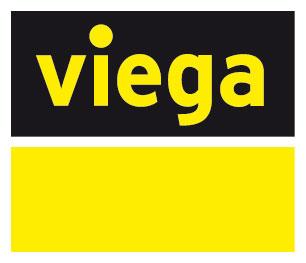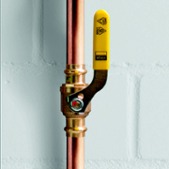If you trace the history of pipe dimensions, iron pipe size (IPS) is the first to pop up on the industry timeline. But with the rise of copper tubing over the years, another industry standard has emerged: copper tube sizing (CTS).
Iron pipe size, copper tube size and nominal pipe size are the three most common pipe sizing systems and it’s important to know the difference. Let’s start by establishing the acronyms:
- IPS: iron pipe size
- CTS: copper tubing size
- NPS: nominal pipe size
- OD: outside diameter
- ID: inside diameter
Commonly available in stainless steel, carbon steel and CPVC, IPS is prevalent in general piping and industrial applications. Meanwhile, CTS is commonly available in copper, CPVC and PEX and commonly used in plumbing and potable water systems.
The dimensions of pipes typically made from certain materials are defined according to IPS, CTS and in some cases both.
Yet this only scratches the surface of what divides these two industry standards. Here’s a closer look at what makes each unique
How Do IPS and CTS Differ?
The best place to start this conversation is with the history behind IPS. It used to be a standard for wrought iron pipe only. This was controlled by inner diameter (ID) because in the early 19th century, iron pipe was made by welding two halves of pipe together. Today’s methods include cold working the pipe and welding the rolled sheet or using a mandrel to extrude seamless pipe.
The main difference between IPS and CTS is the actual outside diameter (OD). It used to be that CTS was controlled by OD, and so the outside diameter is actually the same as the nominal diameter plus ⅛". The extra ⅛" accounted for the double standard thickness of copper tubing at the time (1/16" X 2), so a 2" pipe was actually 2.125" in diameter. IPS was controlled by inside diameter (ID); however, due to advances in technology and piping production, a new standard had to be created to match fittings and piping. When nominal pipe size (NPS) essentially took over for IPS, it also became an OD-controlled value based on ASME B36.10., and thus the diameter differs from the nominal diameter (i.e., a 2" fitting actually has a 2.375" OD in IPS, and a ½" fitting has a 0.840" OD).
(Viega still uses IPS rather than NPS to avoid potential confusion with National Pipe Straight, which is part of ASME B1.20.)
For both CTS and IPS, there is another measurement that refers to the wall thickness of the pipe or tubing. In CTS, tube dimensions are specified by an exact OD and tube wall thickness. (Again, due to advances in technology, we can now create thicknesses other than the ⅛" that used to be the only thickness available). In IPS, pipe dimensions are defined by a nominal OD (which is different from the measured or actual OD) and a “schedule” that relates to pipe wall thickness.
Because CTS is OD-controlled, any change in the wall thickness of the tubing will cause a change to the internal diameter and alter the flow inside the pipe. In copper, the wall thickness of the tube is designated by the letters K (thickest), L (intermediate) and M (thinnest). For other types of pipe, like PEX and CPVC, wall thickness is designated by the standard dimension ratio (SDR), which is defined as the ratio of the OD to wall thickness and has a typical range of 7.4 to 13.5.
What is NPS?
NPS is another North American pipe size standard, which has largely replaced IPS. It specifies size with two non-dimensional numbers: NPS for ID and schedule for wall thickness. The size refers to OD, based on ASME B36.10, meaning the actual OD differs from the nominal diameter. So, a 2" NPS fitting actually has a 2.375" OD in IPS and a ½" fitting has a 0.84" OD. NPS is commonly used for PVC and CPVC.
What is Pipe Schedule?
Schedule is the measurement of wall thickness for IPS and NPS pipes.
Numbers can range from schedule 5 to 160. The higher the number, the thicker the wall and the smaller the ID. The thicker the wall, the higher the pressure it can withstand, but the volume it can carry is less. Regardless of the wall thickness, the nominal and measured OD won’t change.
Knowing the differences between sizing standards can avoid confusion when ordering material and on the jobsite. Whatever standard and material you use, Viega offers press fittings to meet your needs. In a matter of seconds, you’ll be able to make secure, consistent connections that ensure system success. To learn more about the products and services we offer, contact a Viega sales representative today.









